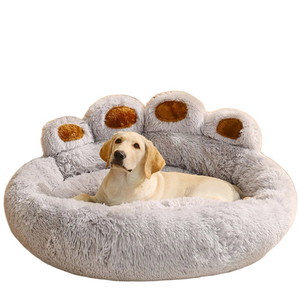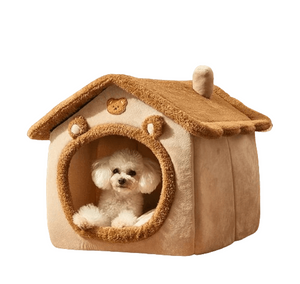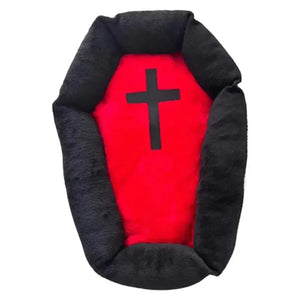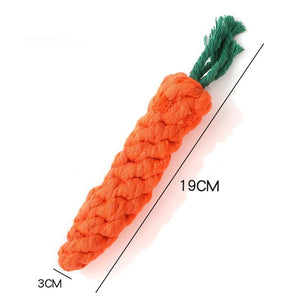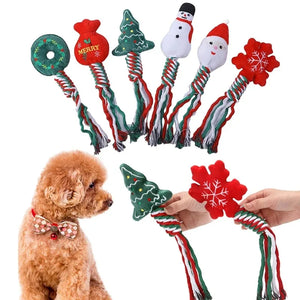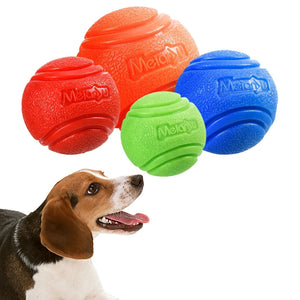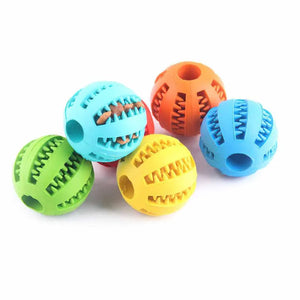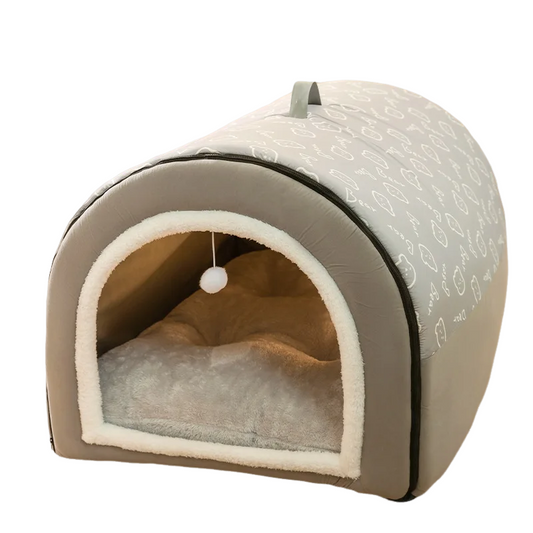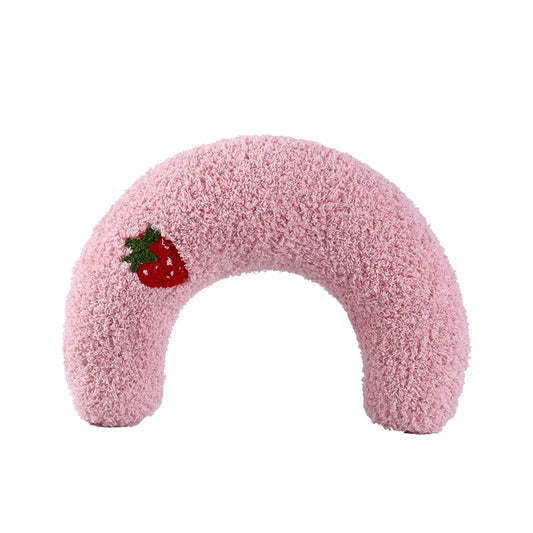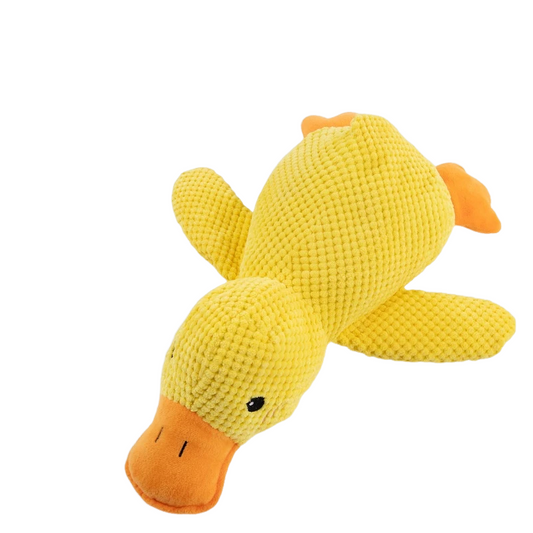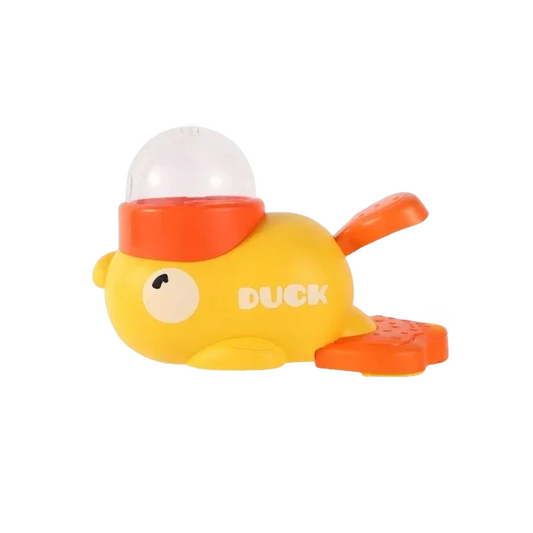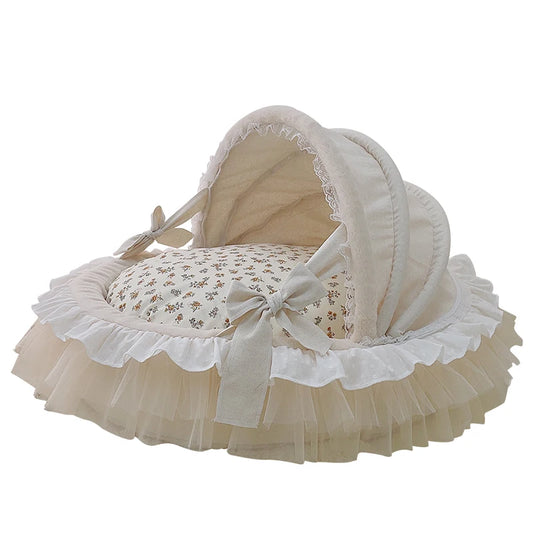Introduction
Separation anxiety is a common issue in puppies, especially when they are left alone at home. This anxiety may manifest in excessive barking, chewing, destructive behavior, inappropriate urination, or even depression. Not only does it negatively affect your puppy’s mental and emotional well-being, but it also disrupts household harmony. However, with proper training, environmental adjustments, and the right tools, you can help alleviate your puppy’s separation anxiety and gradually teach them how to enjoy alone time.
In this article, we will provide a comprehensive guide to relieving your puppy’s separation anxiety, including detailed steps and useful product recommendations from The Pet Paradise. With the right approach and support, you can help your dog remain calm and comfortable when left alone.
1. What is Separation Anxiety? How to Identify It?
Separation anxiety is a behavioral disorder that occurs when a dog becomes excessively anxious when separated from its owner. It’s not just a brief feeling of loneliness but ongoing anxiety that can lead to problematic behaviors. Understanding and recognizing the symptoms of separation anxiety is the first step in helping your puppy cope with this condition.
Common Symptoms of Separation Anxiety:
-
Excessive Barking or Chewing on Furniture: When left alone, puppies may bark excessively or chew on household items such as furniture, shoes, or door frames. This is often a sign of distress and anxiety.
-
Inappropriate Urination: Even if house-trained, puppies with separation anxiety may lose control of their bladder and have accidents in the house due to their heightened anxiety.
-
Destructive Behavior: In severe cases, puppies may engage in destructive behaviors like tearing up furniture, pillows, or even trying to escape by scratching doors or windows, potentially injuring themselves in the process.
-
Depression or Withdrawal: Some puppies may show signs of depression, become lethargic, or lose interest in food or play when they are left alone for extended periods.
Identifying these symptoms early on will allow you to take appropriate measures to alleviate your puppy’s anxiety and teach them how to cope with being alone.

2. Common Causes of Separation Anxiety
Before addressing your puppy’s separation anxiety, it’s important to understand what causes it. Separation anxiety is often linked to a puppy’s dependence on its owner and previous social experiences. Here are some of the common reasons puppies develop separation anxiety:
Causes of Separation Anxiety:
-
Early Life Experiences: Puppies who have been abandoned, neglected, or spent long periods alone during their early development are more prone to separation anxiety. These experiences make them fearful of being left alone again.
-
Overdependence on Owners: If a puppy spends all its time with its owner and has little opportunity to be alone, it may become overly attached. When the owner leaves, the sudden absence can cause extreme distress.
-
Changes in Environment: Significant changes, such as moving to a new home, the addition of a family member, or being rehomed, can trigger separation anxiety. Puppies are creatures of habit, and disruptions in their routine can make them feel insecure.
Understanding the root cause of your puppy’s separation anxiety will help you tailor a plan to alleviate their distress and build their confidence.

3. How to Relieve Puppy Separation Anxiety: Step-by-Step Approach
Helping your puppy overcome separation anxiety requires patience, consistency, and the right strategies. Below are some detailed steps you can follow to gradually train your puppy to feel comfortable when left alone.
3.1 Gradually Increase Alone Time
The most effective way to reduce separation anxiety is to gradually increase the time your puppy spends alone. Sudden and extended periods of isolation can overwhelm your puppy, so it’s important to ease them into it.
Steps to Follow:
-
Start with Short Absences: Begin by leaving your puppy alone for just a minute or two while you step into another room. Make sure to return calmly without creating a fuss, so your puppy doesn’t associate your return with excitement.
-
Gradually Extend Time: Once your puppy is comfortable being left alone for a few minutes, gradually increase the time. Work your way up to 10 minutes, 20 minutes, and then longer periods as they show signs of adjusting well.
-
Stay Calm and Neutral: It’s important not to make a big deal out of leaving or returning. Act as if it’s no different from any other activity, which will help normalize the experience for your puppy.
3.2 Create a Safe and Comfortable Environment
Giving your puppy a designated space where they feel safe can make a big difference in reducing anxiety. This space should be cozy, familiar, and free from distractions, helping your puppy relax when they are alone.
Recommended Products:
-
Cozy Dog Bed: A comfortable and soft dog bed is essential for creating a relaxing environment. This cozy dog bed will provide your puppy with a secure place to rest, helping them feel at ease when left alone.
-
Anxiety Relief Pet Blanket: The soft pet blanket offers warmth and security, making it an ideal item for comforting your puppy during moments of anxiety.
3.3 Provide Chew Toys and Interactive Items
To keep your puppy entertained while you're away, provide them with chew toys and interactive items. Chewing is a natural way for dogs to relieve stress, and having a toy or treat to focus on can distract them from their anxiety.
Steps to Follow:
- Offer durable chew toys or interactive puzzle toys that keep your puppy’s mind engaged. This not only provides mental stimulation but also gives them something positive to focus on while you're gone.
- Ensure the toys are safe, durable, and challenging enough to keep them occupied for an extended period.
Recommended Products:
-
Durable Chew Toy: This durable chew toy is perfect for puppies to gnaw on while alone. It helps reduce stress, provides long-lasting entertainment, and is designed to withstand tough chewers.
-
Interactive Pet Ball: This interactive ball engages puppies’ curiosity, providing mental stimulation and a fun distraction, keeping them busy while you’re away.
3.4 Use Calming Sprays or Relaxation Tools
Calming sprays containing natural ingredients can help soothe your puppy’s anxiety. These sprays release scents that mimic calming pheromones, making your puppy feel more secure when they’re alone.
Steps to Follow:
- Spray calming products around your puppy’s resting area, bedding, or blanket to create a soothing environment that encourages relaxation.
- Use these sprays consistently to help your puppy associate their space with feelings of calmness and safety.
4. Training Tips to Build Confidence in Puppies
In addition to using physical comforts and toys, you can help reduce your puppy’s separation anxiety by building their confidence through training. Confident dogs are less likely to experience anxiety when left alone.
4.1 Minimize Emotional Goodbyes
When leaving the house, it’s important to avoid making a big production out of saying goodbye. Overly affectionate farewells can make your puppy feel like something significant is happening, which may increase their anxiety.
4.2 Train Basic Commands to Build Confidence
Teaching your puppy basic commands like “sit,” “stay,” and “wait” can help build their self-assurance. Rewarding them for following commands will boost their confidence and create a sense of independence, making them more comfortable when left alone.
4.3 Leave Behind an Item with Your Scent
Leaving behind a piece of clothing or blanket that carries your scent can help comfort your puppy when they’re alone. The familiar smell will remind them of your presence and help reduce feelings of loneliness.

5. When to Seek Professional Help
While most puppies can overcome separation anxiety with the right training and tools, some may have more severe symptoms that require professional intervention. If your puppy displays extreme destructive behavior, self-harm, or prolonged depression, consult a veterinarian or pet behaviorist for guidance. These professionals can assess the severity of your puppy’s anxiety and provide specialized treatment plans.
Conclusion
Puppy separation anxiety can be managed with the right approach, consistent training, and the use of appropriate calming tools. By gradually increasing your puppy’s alone time, creating a comfortable space, and providing engaging toys, you can help them adapt to being alone. With the assistance of The Pet Paradise products, including the cozy bed, anxiety-relief blanket, chew toys, and calming spray, you can provide your puppy with the support they need to overcome anxiety and enjoy more peaceful alone time.
With time, patience, and dedication, you and your puppy can work together to create a less stressful, more harmonious environment. However, if your puppy’s anxiety becomes too severe, seeking professional help is always a wise option.








